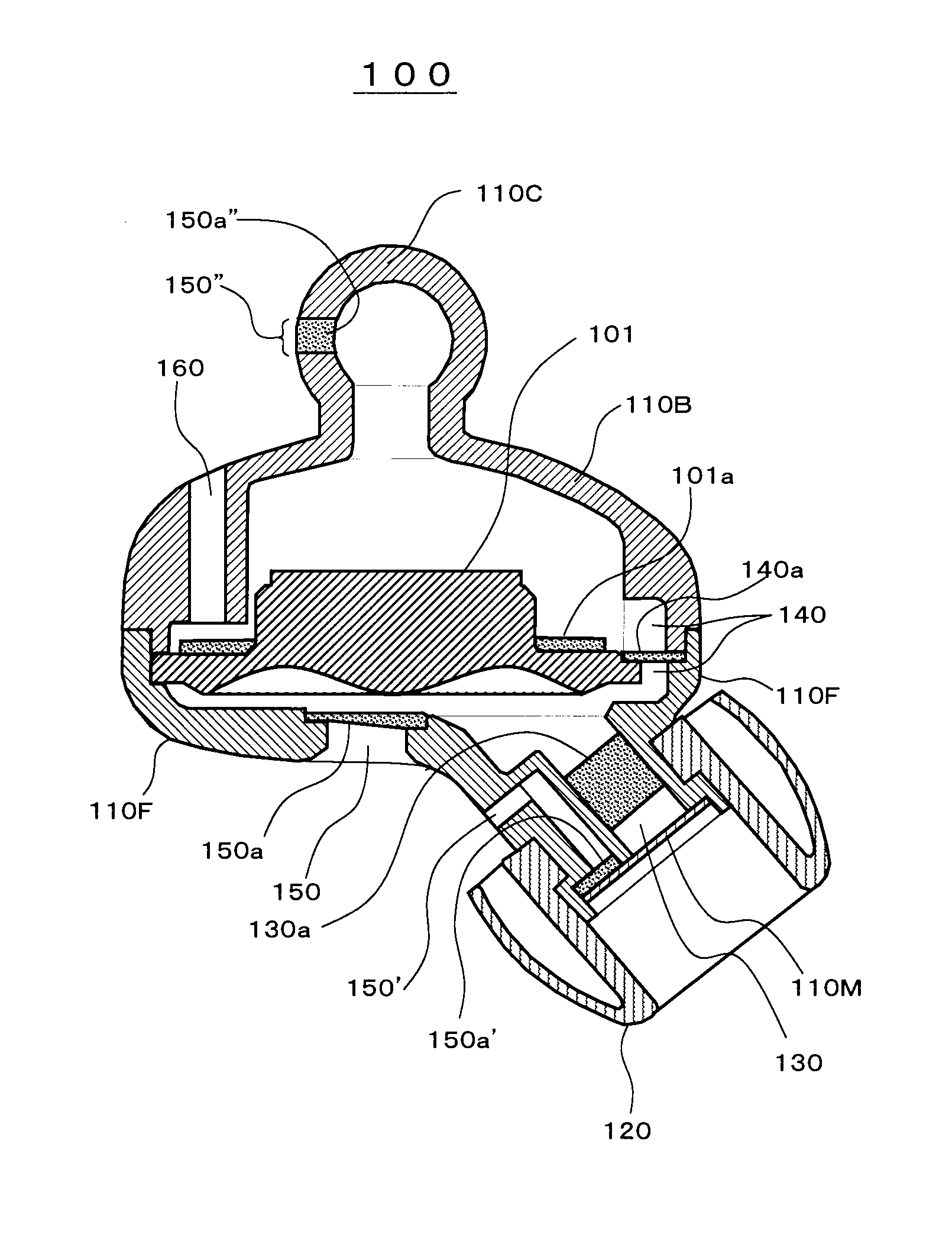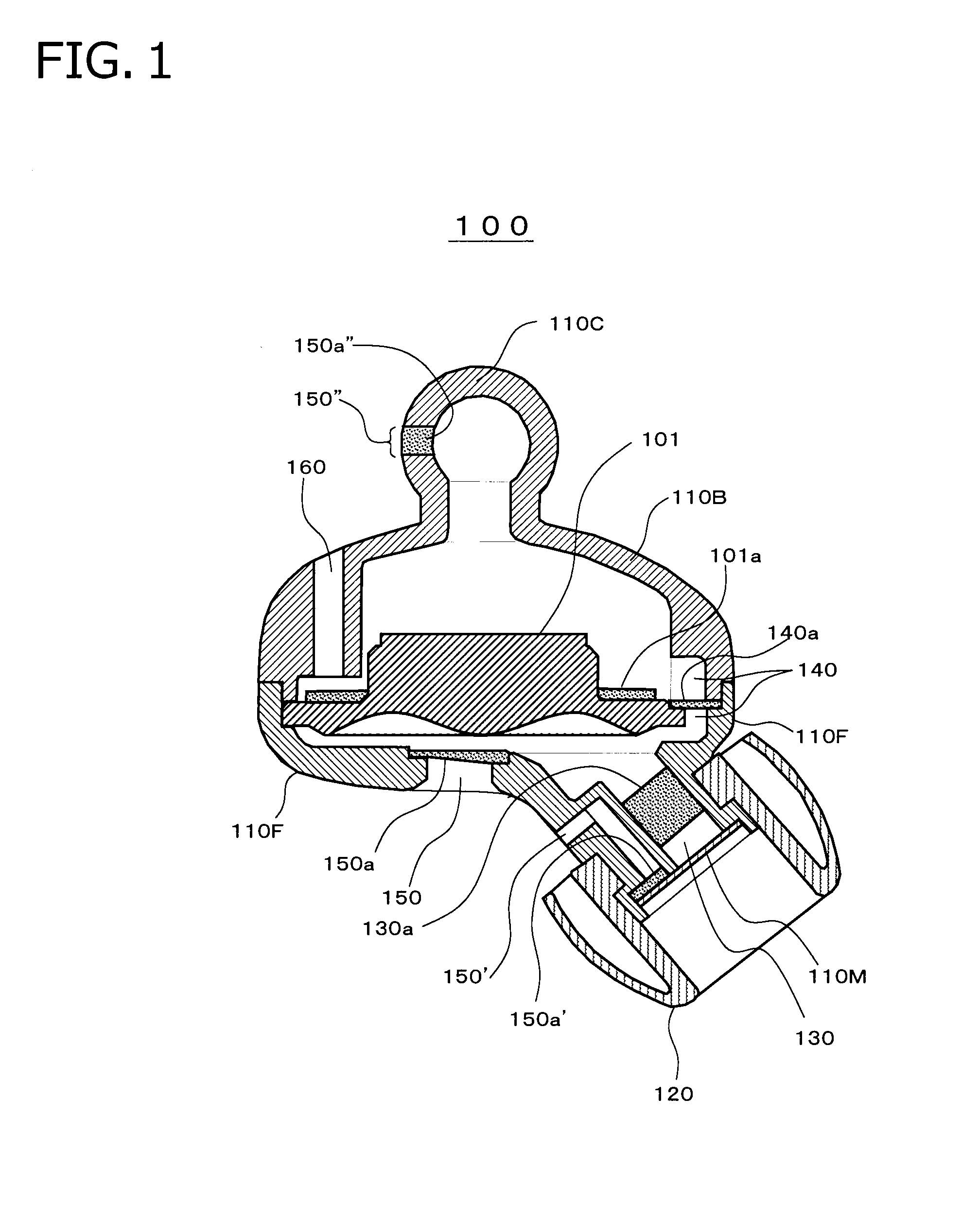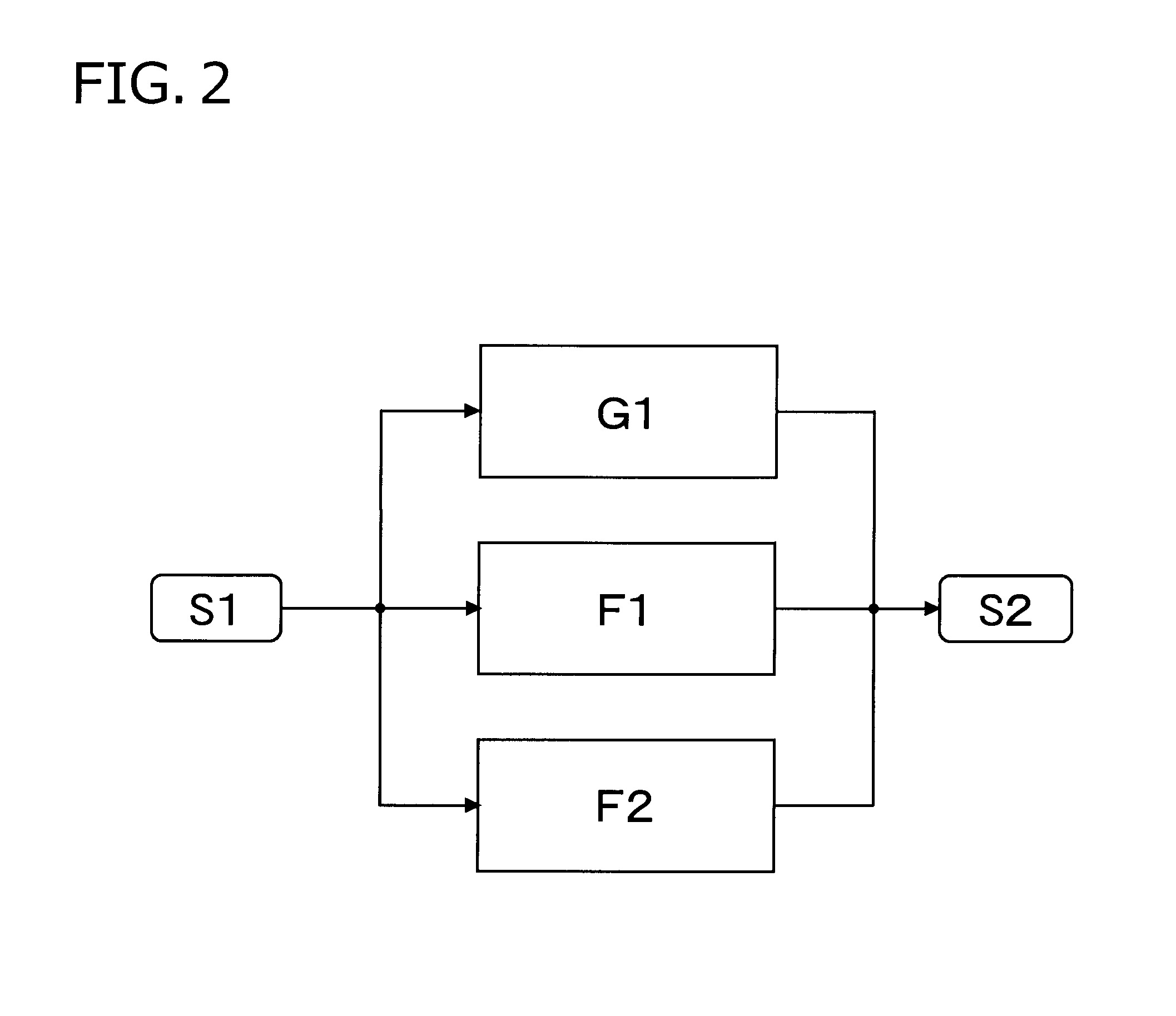Earphone
a stereophone and earphone technology, applied in the field of stereo earphones, can solve the problems of inability to completely suppress digital processing, lack of versatility of signal processing circuits, and difficulty in incorporating digital signal processing circuits into earphones, so as to suppress the occlusion effect, eliminate a variance of frequency characteristics, and suppress the effect of occlusion
- Summary
- Abstract
- Description
- Claims
- Application Information
AI Technical Summary
Benefits of technology
Problems solved by technology
Method used
Image
Examples
embodiment
Configuration of Embodiment
[0035]FIG. 1 is a view showing a sectional configuration of an earphone 100 according to an embodiment of the invention.
[0036]Referring to FIG. 1, a driver unit 101 that generates a sound by vibrating a vibration plate according to an electric signal inputted therein is installed at a center, and installed on the outside of the driver unit 101 are a front housing 110F as a first sound channel provided as a sound exit and a front enclosure, a back housing 110B provided as a rear enclosure while securing a rear space, and a cable housing 110C provided to secure a rear space and for extraction of cables. Also, an attenuation material 101a is installed on the rear side of the vibration plate of the driver unit 101 to attenuate a resonance peak of the vibration plate.
[0037]The front housing 110F is provided with a tube-like first sound channel 130 as a sound exit. Further, an ear piece 120 made of silicon rubber or the like so as to be inserted into the entranc...
modification 1
[0055]It should be understood that the respective configurations shown in FIG. 1 merely represent a specific example of the embodiment and various modifications are possible.
[0056]For example, it is possible to provide a plurality of second sound channels as the second sound channel 140 to generate a sound equivalent to a plurality of spatial reflected sounds each having a different time lag.
[0057]In this case, a time lag can be extended or shortened and magnitude of a delay can be increased or decreased by selectively switching a plurality of the second sound channels to open and close using shutters or the like, so that a user can select a desired reflected sound, such as reverberation in a small hall, reverberation in a large hall, and reverberation in a concert venue.
modification 2
[0058]By forming the attenuation material 130a exchangeable by a user, the user becomes free to make an adjustment regarding to which extent the occlusion effect in an external auditory canal is eliminated (for example, adjustment of an amount of attenuation and a frequency) and a selection regarding to which extent the out-of-head sound localization is widened or narrowed. Likewise, by also forming the other attenuation materials exchangeable by the user, the user becomes free to make an adjustment regarding to which extent the occlusion effect in an external auditory canal is eliminated and a selection regarding to which extent the out-of-head sound localization is widened or narrowed.
PUM
 Login to View More
Login to View More Abstract
Description
Claims
Application Information
 Login to View More
Login to View More - R&D
- Intellectual Property
- Life Sciences
- Materials
- Tech Scout
- Unparalleled Data Quality
- Higher Quality Content
- 60% Fewer Hallucinations
Browse by: Latest US Patents, China's latest patents, Technical Efficacy Thesaurus, Application Domain, Technology Topic, Popular Technical Reports.
© 2025 PatSnap. All rights reserved.Legal|Privacy policy|Modern Slavery Act Transparency Statement|Sitemap|About US| Contact US: help@patsnap.com



